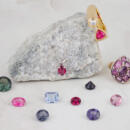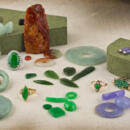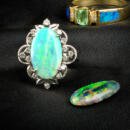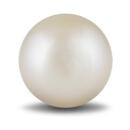Search Results
Fine Jewelry University Articles matching: “blue sapphiresnt”
Showing only FJU Article results. Click here to show all results.
Fine Jewelry University (Show All FJU Articles)
-

Gem in the Spotlight: Spinel
…, but now the entire color pallet has been opened up. Spinel is arguably the most overlooked and underappreciated gemstone of all time. Spinel was first made in a lab over 100 years ago when scientists who were trying to synthesize blue sapphire wound up creating spinel by mistake. Since then many processes have been used and perfected to create spinel in even more colors than it is naturally found in. Because of how easily it can be created in a lab, synthetic spinel …
-

The Magic of Polarized Light
…, darken skies, and cuts out glare to help improve photo quality. Some filters can even be rotated on the lens to selectively see through the surface of water or only capture the reflection. Modern 3D movies: Unlike old school red and blue 3D movies, modern 3D uses two images along with a pair of glasses that have polarizing filters for lenses. This tricks your brain into thinking you are seeing a three-dimensional object using our perception of depth. Liquid crystal …
-

Gem in the Spotlight: Jade
…polish. Nephrite is commonly found in a darker olive green color but can also be very light green, orangey-red, black, and yellowish green. Jadeite can come in many different colors including pink, purple (often called lavender jade), blue, black, white, and the most valuable/desirable color: a vibrant green. The finest of all green jadeite colors is a saturated emerald green that is almost transparent, and it is called “Imperial Jade.” Jade is one of the top selling …
-

How Are Lab Grown Diamonds Made?
…gases and introduced into the diamond as it forms. With HPHT diamonds, it is very difficult to create truly colorless gems. This is because even the smallest presence of nitrogen or boron during the process can result in a yellow or blue color respectively. Both HPHT and CVD diamonds tend to exhibit strong and unusual fluorescence characteristics when compared to natural diamonds. This fact, while not generally detrimental to the appearance of the diamonds, is quite …
-

Gem in the Spotlight: Opal
…, you will get different colors. Opals can display just about every color of the rainbow, but hues of green and blue are the most common. Typically the higher end opals have a darker body color, and a wide range of colors. Red carries … orange body color, many of these stones have little to no play of color. The best stones have strong greens and blues that flash through the orange body color. Boulder Opal: Boulder opals are gem opal material that still incorporates …
-

Gem in the Spotlight: Pearl
… Pearls: Also known as black pearls, Tahitian pearls are a type of saltwater pearl that are grown primarily in French Polynesia. They are known for their dark, rich colors, which range from dark green and gray to deep shades of blue and black. Tahitian pearls are generally large with an average size of 9mm to 18mm, and they commonly have baroque or irregular shapes. South Sea Pearls: Only a small percentage of oysters are able to produce these large, high-quality pearls…